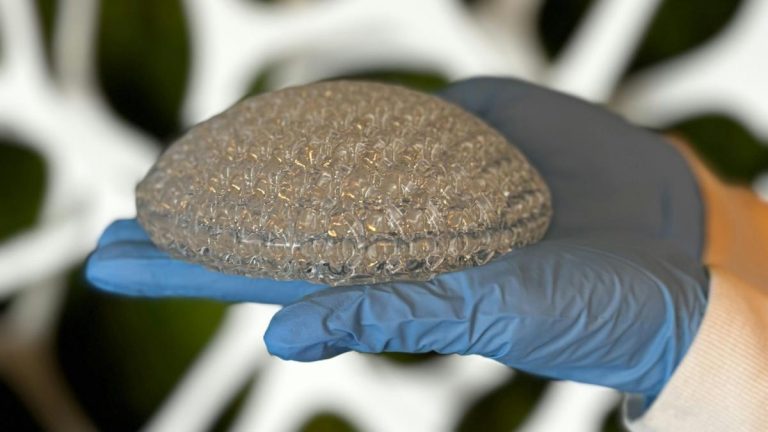A new preclinical study from CollPlant Biotechnologies and Stratasys seeks to create commercially sized 200cc regenerative implants printed on a Stratasys Origin 3D printer. The study will test the implants’ ability to promote the growth of natural breast tissue and fully degrade over time.
Since announcing the partnership in April 2023, CollPlant and Stratasys have developed a way to bioprint breast implants and scale up the manufacturing process. The initial results of the study are expected in the first half of 2025.
CollPlant’s new breast implants are designed to regenerate natural breast tissue without provoking an immune response. The technology could offer a revolutionary alternative to reconstructive and cosmetic surgery, which represents a significant portion of the $3 billion breast implant market.
Today’s most read Design & Development:
In the past 16 months, Stratasys has adapted the Origin printer to print regenerative implants, and CollPlant has successfully 3D printed 200cc implants.
CollPlant is exploring new tissue regeneration and organ manufacturing applications for the company’s plant-based rhCollagen. According to the company, rhCollagen is identical to type I collagen produced by the human body, making it an ideal building block for regenerative medicine. The company says the material has advantages over other tissue-derived collagens, including improved biofunctionality, high homogeneity and reduced risk of immune response. The Origin 3D printer prints the implants using a rhCollagen bio ink.
CollPlant is a regenerative and aesthetic medicine company focused on 3D bioprinting tissues and organsas well as medical aesthetics. CollPlant’s products are based on of recombinant human collagen produced with a proprietary genetic engineering technology.
The global breast implant market is valued to 3 billion dollars. Breast reconstruction and augmentation procedures are the second most common plastic surgery procedures performed worldwide, according to a 2021 ISAPS International Survey of Cosmetic/Esthetic Procedures. The most common breast augmentation or reconstruction procedures use synthetic silicone breast implants, an artificial replacement of natural regenerated tissue with the risk of complications.
Earlier this year, CollPlant announced data from previous preclinical studies that showed evidence of well-developed connective tissue containing blood vessels (ie, neovascularization) within the implant. Progressive tissue growth within the implant was also observed, confirming tissue regeneration. An initial biodegradation process was observed, while the original structure of the 3D breast implant was maintained.
According to CollPlant, there was no adverse tissue reaction, confirming the safety profile of this new implant under development.
The CEO of Stratasys, Dr. Yoav Zeif, said in a statement: “CollPlant’s work is truly inspiring and our partnership exemplifies how Stratasys works with customers to push the timeline and boundaries of innovation.”
“We are extremely happy on the progress we have made with our breast implant program and Stratasys’ successful achievement of developing a printer that enables us to print a commercial-sized implant with high resolution and optimal physical properties,” said Yehiel Tal, CEO CollPlant Consultant. The combined pioneering technologies of both companies it is expected to optimize the development and production process so that we have the most efficient means of producing our regenerative breast implants. We believe our rhCollagen-based regenerative implant has the potential to overcome the challenges of existing breast procedures using silicone implants or autologous fat transfer, thereby significantly improving patient outcomes.”
3D printing technology is becoming increasingly critical in the medical market. Stratasys and Ricoh recently announced a clinical study to evaluate the use of 3D printed models for orthopedic oncology. In June the company launched the J5 Digital Anatomy 3D printer, which is specifically designed for the manufacture of high-fidelity anatomical models.
Click here to register in our daily newsletter featuring breaking news from the design industry.

